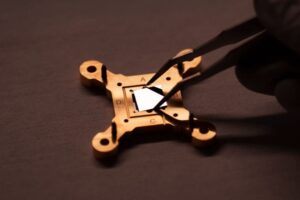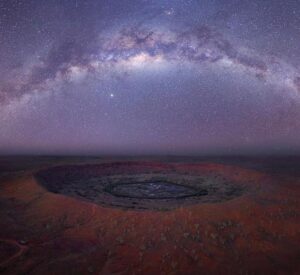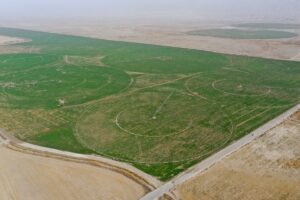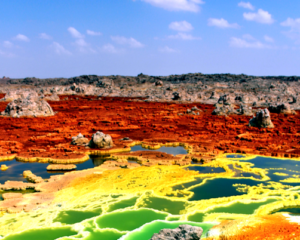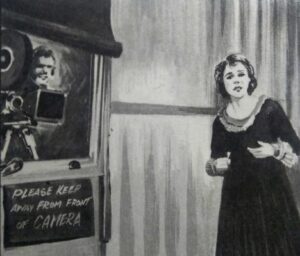 Pin
Pin One of the most famous names in polar exploration is that of the Norwegian, Roald Amundsen. Ever since he had cheered home Nansen, the first man to cross Greenland, he had been fascinated by these mysterious lands. As a young man he joined the navy, ever alert for the chance to travel into the polar regions.
 Pin
Pin 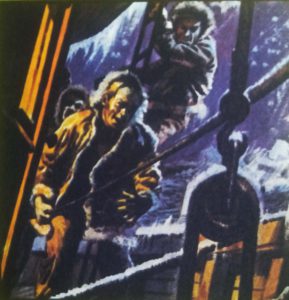 Pin
Pin It came when he was aged 25. He was chosen as first mate on the Belgian research ship Belgica, which left Antwerp in 1897. This was the first ship to spend a winter successfully in the Antarctic. The voyage proved beyond doubt that men with proper food and protection could survive the worst Antarctic conditions.
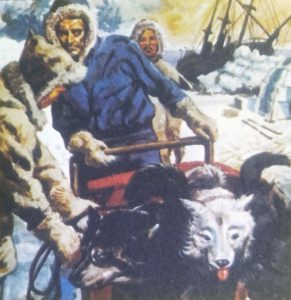 Pin
Pin Amundsen now wanted to lead his own expedition and sail through the North-west Passage (an icy sea route north of Canada linking the Atlantic and Pacific Oceans). His ship Gjöa left Norway in 1903. The journey took three years and Amundsen learnt the ways of the native Eskimos, especially the use of dog sledges.
 Pin
Pin Amundsen’s next target was the North Pole, but in 1909 he heard that the American, Peary, had beaten him to it. So he turned south, and with skilful use of dog teams, he sped across the Antarctic. On December 14, 1911, with his four companions, Amundsen became the first man to reach the South Pole.
 Pin
Pin The North Pole is set on a sea of slowly moving ice, and Amundsen’s next scheme was to take a ship into this and allow it to be carried as near to the Pole as possible. In September 1918 he wedged his ship Maud into the ice. He docked in Alaska in July 1920 having sailed from Norway to the Pacific.
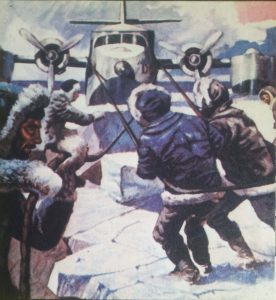 Pin
Pin Amundsen was the first man to sail completely around the world… within the Arctic Circle! He was also quick to see the potential of modern inventions in polar explorations. His first attempt to fly over the Pole came in 1925 but his aeroplanes ran out of fuel and had to make emergency landings.
 Pin
Pin But Amundsen did fly over the North Pole using an Italian-built airship, the Norge. It arrived over the Pole on May 11, 1926, circled it and dropped the flags of Norway, Italy (for the Italian pilot Nobile) and the United states (for the financial backers). Two years later, Nobile and an Italian crew set out again for the Pole in another airship, the Italia. But something went wrong and the airship crashed. Many search parties set out to search for the crew, including Amundsen who took the only aeroplane available to him in the emergency. But although the crew was rescued it was not by Amundsen; he had made his last polar expedition, for the aeroplane disappeared and this extraordinary explorer was never seen again.
Robert Peary is often credited with being the first person to fly to the North Pole, although this claim has been subject to controversy and scrutiny. While some evidence supports his achievement, there are also doubts and alternative theories. Here are a few pieces of evidence that have been used to support his claim:
However, it is worth noting that there is evidence contradicting Peary’s claim, and alternative theories have been proposed. Some argue that Peary might have fallen short of the actual North Pole, while others question the accuracy of his navigation methods or suggest that he fabricated his claim for political or personal gain. The credibility of Peary’s achievement remains a subject of debate among historians and explorers.
There were several previous attempts and explorations of the North Pole before Richard E. Byrd's flight :
One of the earliest known attempts was made by British explorer Sir Martin Frobisher in 1576. Frobisher embarked on a voyage to find a Northwest Passage, which would connect the Atlantic and Pacific Oceans, but he ended up exploring the eastern Canadian Arctic without reaching the North Pole.
In the late 19th and early 20th centuries, several expeditions were launched to explore the North Pole. Notable among them was the 1893-1896 Nansen expedition led by Norwegian explorer Fridtjof Nansen, who purposely allowed his ship, the Fram, to get trapped in the Arctic ice to drift towards the pole. Although the expedition didn’t reach the exact position of the North Pole, they came very close and set a record for reaching the farthest north at that time.
Another well-known attempt was made by American explorer Robert Peary in April 1909. Peary claimed to have reached the North Pole, but his claim remains controversial with some historians suggesting that he might have fallen short of the actual pole.
These are just a few examples of the many attempts and explorations that took place before Richard E. Byrd’s flight to the North Pole.
The controversy surrounding the first flight to the North Pole had a significant impact on the reputation and legacy of Richard E. Byrd and Robert Peary :
For Robert Peary, the controversy mainly centered around his claim of being the first person to reach the North Pole in 1909. This claim was disputed by several explorers and scholars, who questioned the accuracy of Peary’s navigation and his ability to accurately determine his location. Peary’s reputation suffered as a result, with many considering his claim to be dubious. Additionally, the controversy raised doubts about his integrity and honesty as an explorer. Although Peary received some support from the public and certain institutions, the dispute surrounding his claim tarnished his legacy and caused him to be viewed with skepticism by many.
Similarly, the controversy surrounding Richard E. Byrd’s flight to the North Pole in 1926 also affected his reputation. Byrd’s claim of being the first person to fly over the North Pole was met with criticism from explorers and scientists who questioned the accuracy of his navigation and doubted whether he had actually reached the North Pole. Byrd’s case was further complicated by conflicting accounts and discrepancies in his own reports. While Byrd was received as a hero by the American public and was awarded prestigious honors, his claim continued to be the subject of debate and skepticism among scholars and experts.
In both cases, the controversies cast doubt on the achievements of Peary and Byrd, and their legacies became a topic of debate in the exploration community. While both explorers still have supporters who argue for their accomplishments, the controversies surrounding their claims have impacted their overall reputation and legacy, leading to ongoing debates about their respective achievements.
The key motivations for explorers attempting to be the first to fly to the North Pole can be attributed to several factors:
Frequently Asked Questions about the first person to fly to the North Pole
The first person to claim a flight to the North Pole is controversial and has been a subject of debate among historians and explorers for many years. While there are several claims, two primary contenders are Richard E. Byrd and Roald Amundsen.
Richard E. Byrd was an American naval officer and aviator who claimed to have flown over the North Pole on May 9, 1926. Byrd made this claim after completing a flight which lasted 15 hours and 57 minutes, covering approximately 1,535 miles. He provided photographs of the expedition, as well as other documentation, to support his claim.
Roald Amundsen was a Norwegian polar explorer who also claimed to have flown over the North Pole. On May 11, 1926, just two days after Byrd’s claim, Amundsen announced that he too had flown over the North Pole. However, Amundsen did not provide as much evidence to support his claim, and there are doubts surrounding the accuracy of his navigation methods and equipment.
The determination of who was the first person to fly to the North Pole is challenging because it relies heavily on primary sources such as photographs, documentation, and eyewitness accounts from the time of the flights. Historians analyze and compare these sources to gather evidence and evaluate their authenticity, accuracy, and consistency.
Yes, apart from the claims made by Richard E. Byrd and Roald Amundsen, there are other theories and claims suggesting that someone else may have been the first to fly to the North Pole. Some theories argue that the flights made by Byrd and Amundsen did not reach the exact geographic North Pole, while others propose that other aviators or explorers may have flown to the region before them. However, these alternative theories generally lack substantial evidence.
The controversy surrounding the first flight to the North Pole arises primarily due to the lack of conclusive evidence and conflicting claims made by explorers. Additionally, the technology and navigation methods used during the time of these flights were not as precise as those used today. This uncertainty has led to ongoing discussions and debates among historians, aviation experts, and polar explorers.
The claims made by Richard E. Byrd and Roald Amundsen, regardless of their validity, had a profound impact on future expeditions and aviation technology. These attempts marked significant milestones in aviation history and pushed the boundaries of human exploration. The controversies surrounding the claims also prompted improvements in navigation techniques, flight instrumentation, and the planning of subsequent polar expeditions.
While modern technology and scientific research have enhanced our understanding of the polar regions and helped to clarify some aspects of these historical flights, they have not definitively determined who was the first person to fly to the North Pole. The debate and controversy surrounding this question are likely to persist unless new evidence or discoveries emerge in the future.
The ongoing controversy surrounding the first flight to the North Pole continues to shape our understanding of polar exploration and aviation history. It emphasizes the importance of critical examination of historical claims and the need for reliable and verifiable evidence. Furthermore, it highlights the challenges and complexities associated with exploring extreme environments and the crucial role technology plays in advancing our understanding of these regions.














